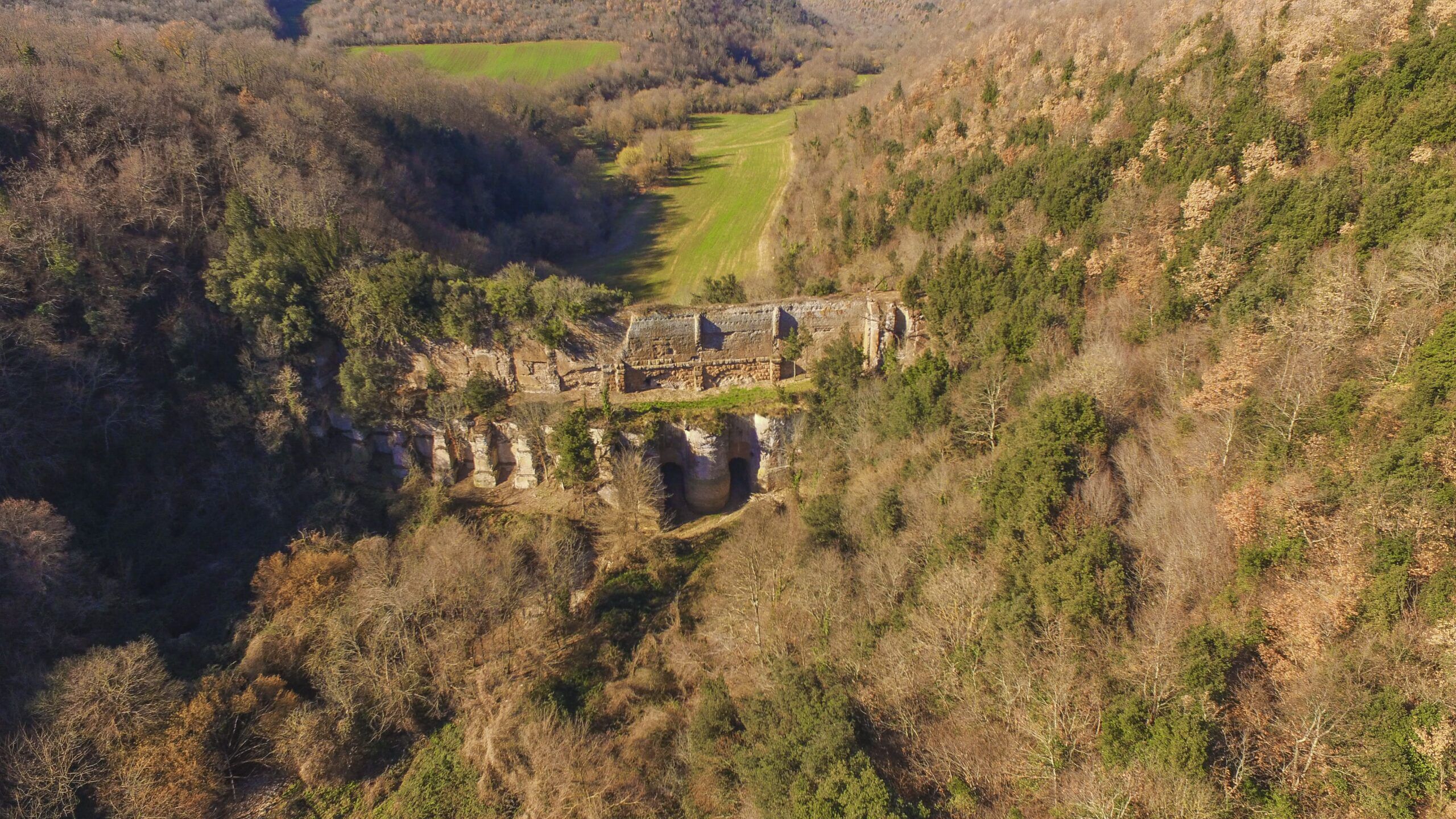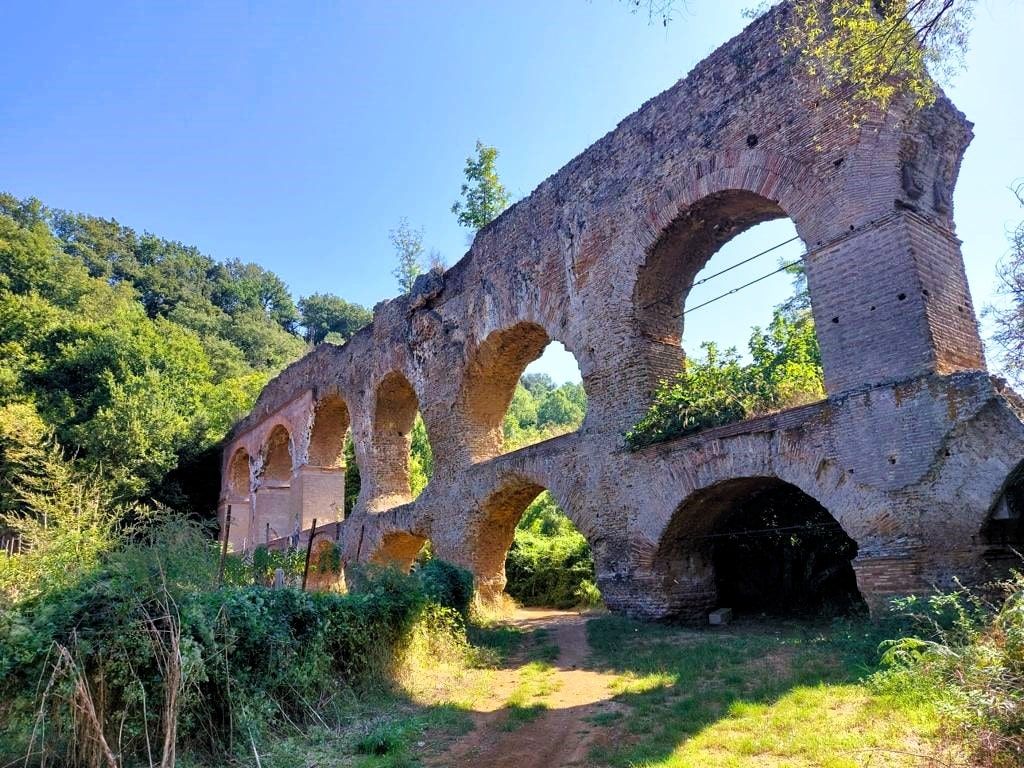Ponte Lupo
Categories: Utilization of water and wind power; Aqueducts for water management.
Historical context: As a testament to Roman engineering prowess, Ponte Lupo, constructed in 144 BC, emerges from the pages of history as a crucial structure in the extensive aqueduct network that sustained the city of Rome. This aqueduct system, an engineering marvel of the Roman Empire, revolutionized urban life by supplying water to public baths, fountains, households, and various activities, ranging from mining operations to agriculture.
Form – main architectural features: Ponte Lupo, standing tall since the 2nd century BC, serves as a beacon of Roman architectural ingenuity. Spanning over one hundred meters in length and towering more than thirty meters high, the bridge facilitates the flow of Aqua Marcia, one of Rome’s lifelines among the eleven aqueducts supplying the city. Its commanding presence, constructed with stone arches, showcases the mastery of Roman builders in harmonizing functionality with grandeur.
Function: The primary function of Ponte Lupo was to channel the Aqua Marcia through the Aniene Valley, ensuring a vital water supply for Rome. As part of an elaborate aqueduct system, it played a pivotal role in regulating water flow through sedimentation tanks, sluice gates, and distribution tanks. This systematic approach allowed Rome to thrive, supporting the burgeoning needs of a growing population and diverse activities.
Lessons for sustainability: Ponte Lupo, though an ancient relic, imparts valuable lessons for sustainability in contemporary times. The Romans, inadvertently or otherwise, embraced eco-friendly practices by utilizing gravity for water transportation. The aqueduct’s well-planned design minimized water loss and, by extension, reduced the need for energy-intensive pumping systems. This ancient infrastructure encourages reflection on sustainable water management practices today.
Cultural heritage and tourism: Undoubtedly the most famous among Roman aqueduct bridges, Ponte Lupo stands as a living testament to the intersection of human innovation and natural resources. Its historical and architectural significance has not faded with time. The bridge, set in the estate of San Giovanni in Campo Orazio, is not just a hydraulic conduit; it’s a cultural icon.
The efforts to map and inspect its hydraulic conduit in 2009 further highlight the dedication to preserving this ancient marvel. Today, Ponte Lupo attracts tourists and enthusiasts alike, offering a tangible connection to Rome’s past.
In essence, Ponte Lupo transcends its functional role as a hydraulic conduit; it symbolizes Rome’s mastery over water, a critical element that sustained one of the greatest civilizations in history.
As visitors explore its majestic arches and historical surroundings, they embark on a journey through time, connecting with the ancient Romans’ vision for sustainable water management and urban development.
Location: Roma – Italy
Ponte Lupo – Italy
Sources
Fondo Ambiente. (n.d.). Ponte Lupo. Retrieved March 3rd, 2024, from https://fondoambiente.it/luoghi/ponte-lupo?ldc
Ponte Lupo. (2019, May 23rd). In Wikipedia. https://it.wikipedia.org/wiki/Ponte_Lupo
Sotterranei di Roma. (n.d.). Ponte Lupo. Retrieved March 3rd, 2024, from https://www.sotterraneidiroma.it/sites/ponte-lupo
Tibursuperbum. (n.d.). Ponte Lupo. Retrieved March 3rd, 2024, from https://www.tibursuperbum.it/ita/escursioni/gallicano/PonteLupo.htm



